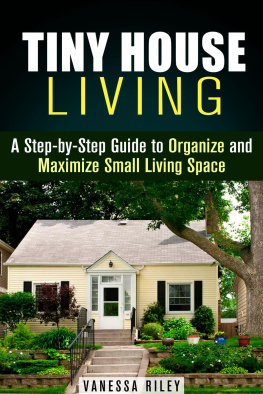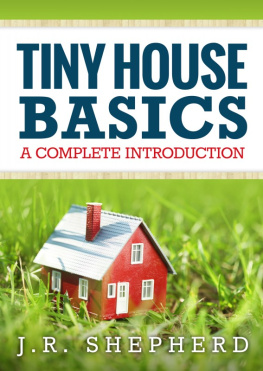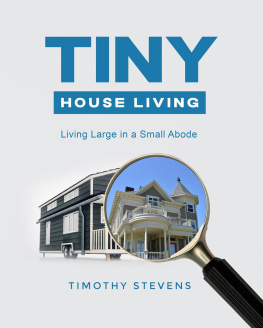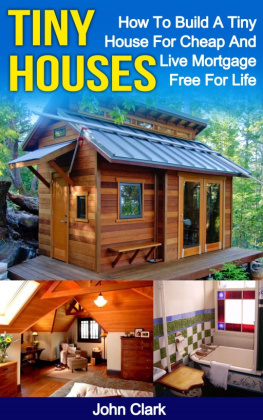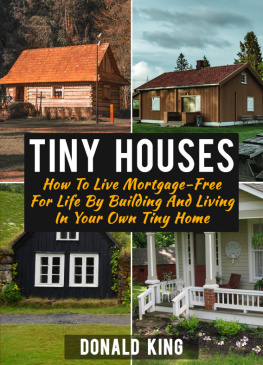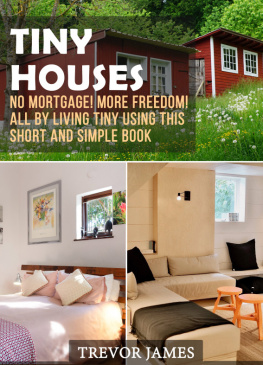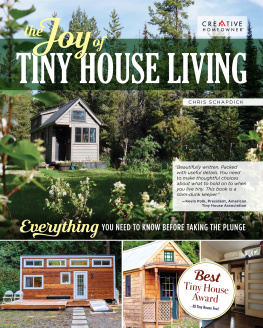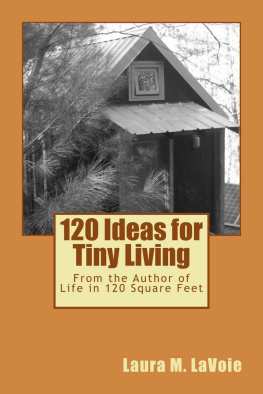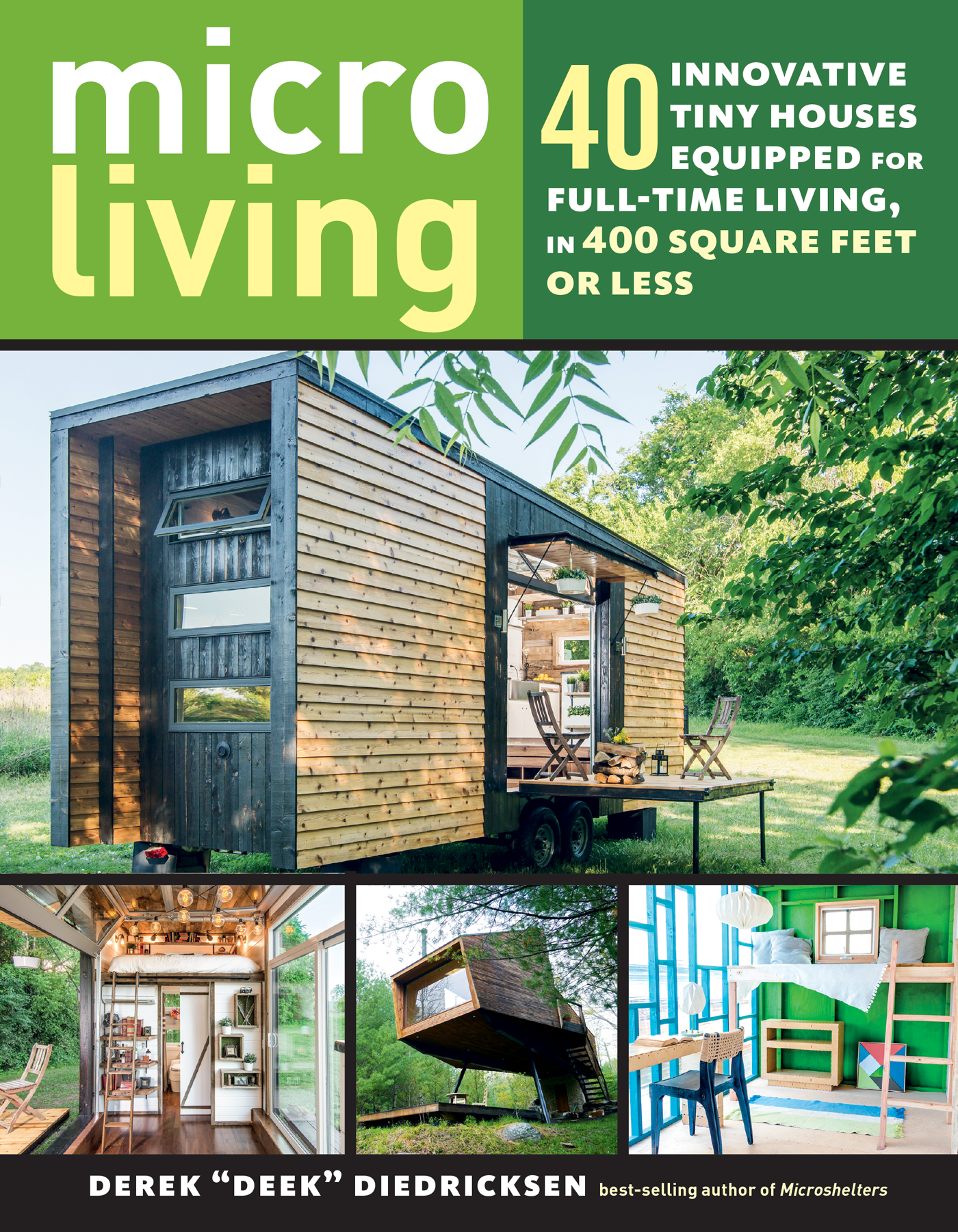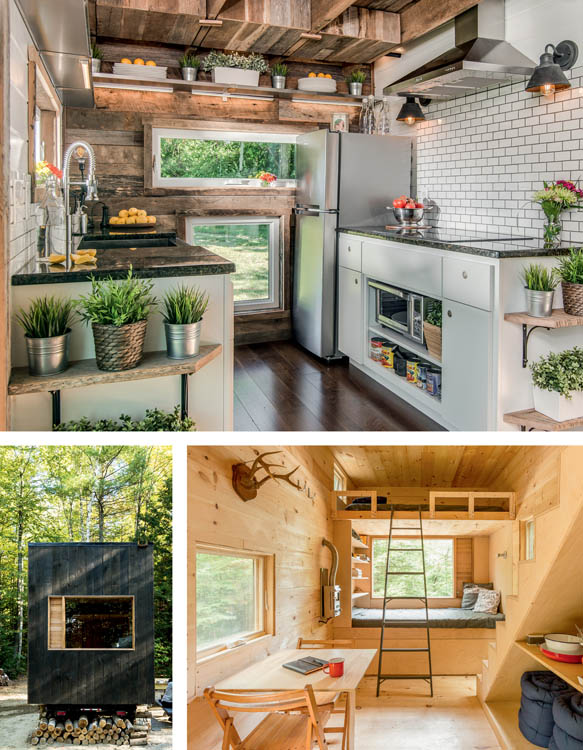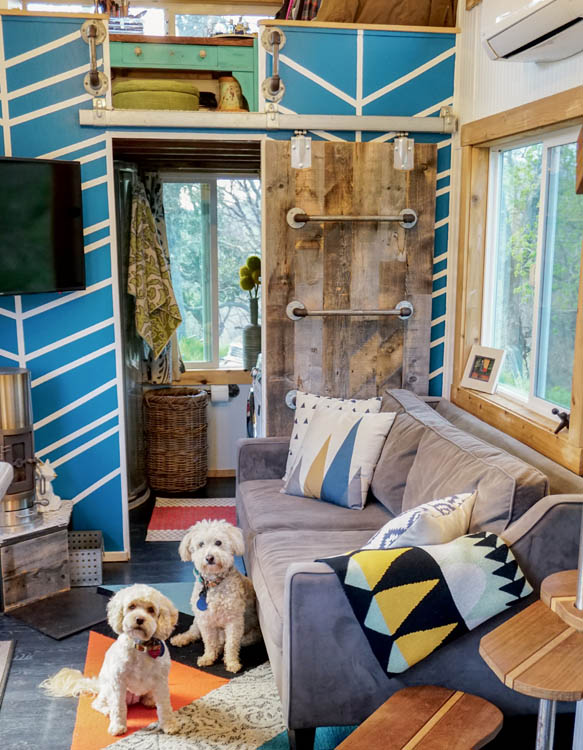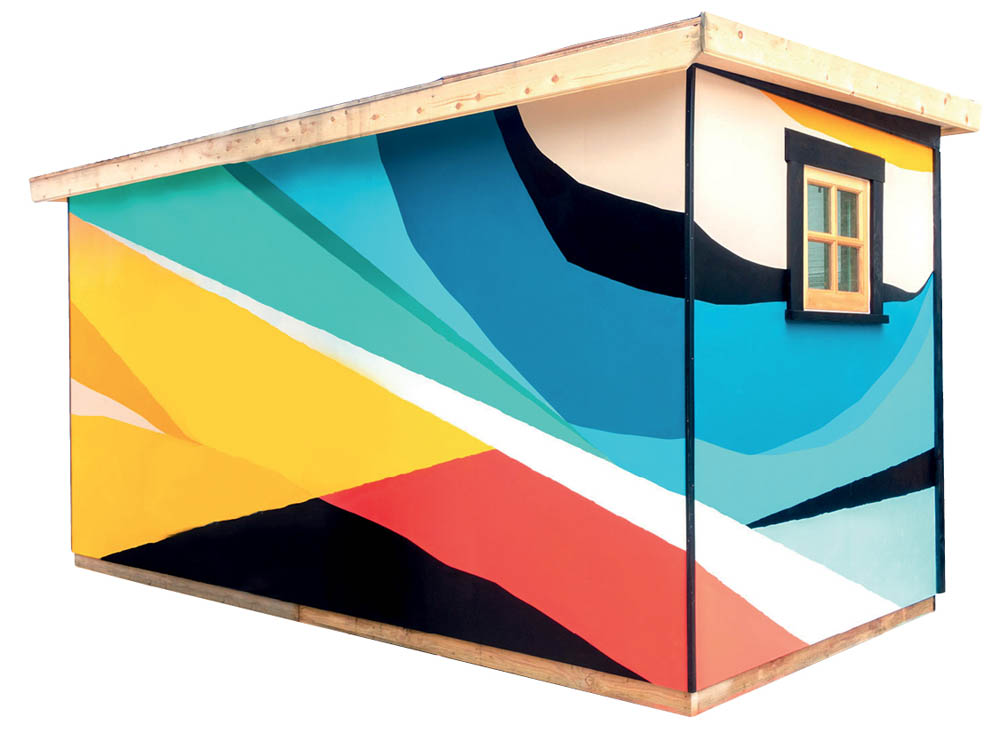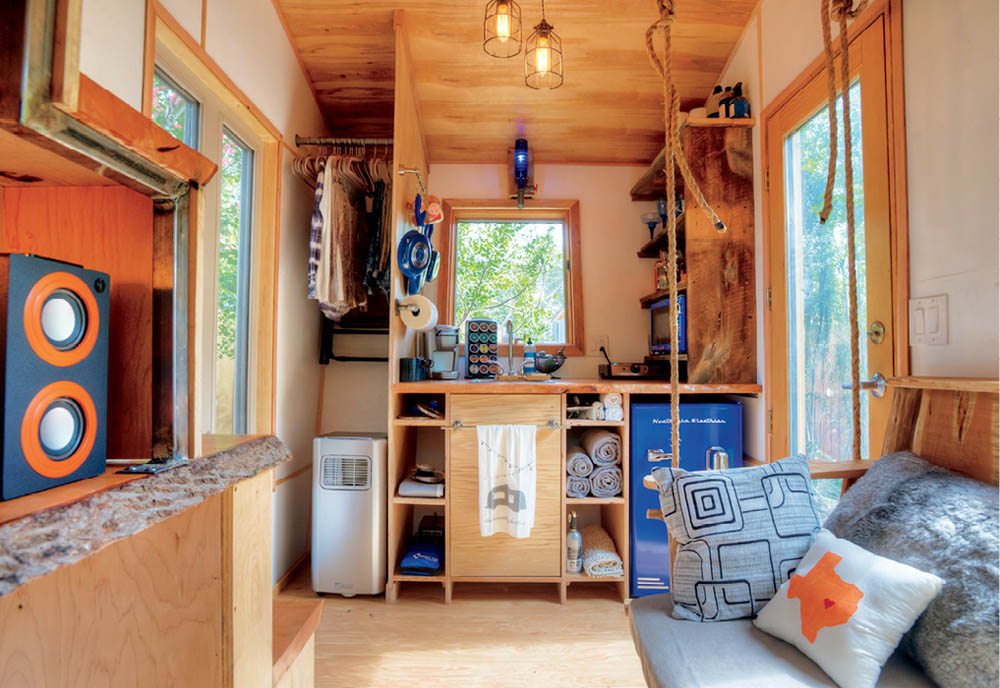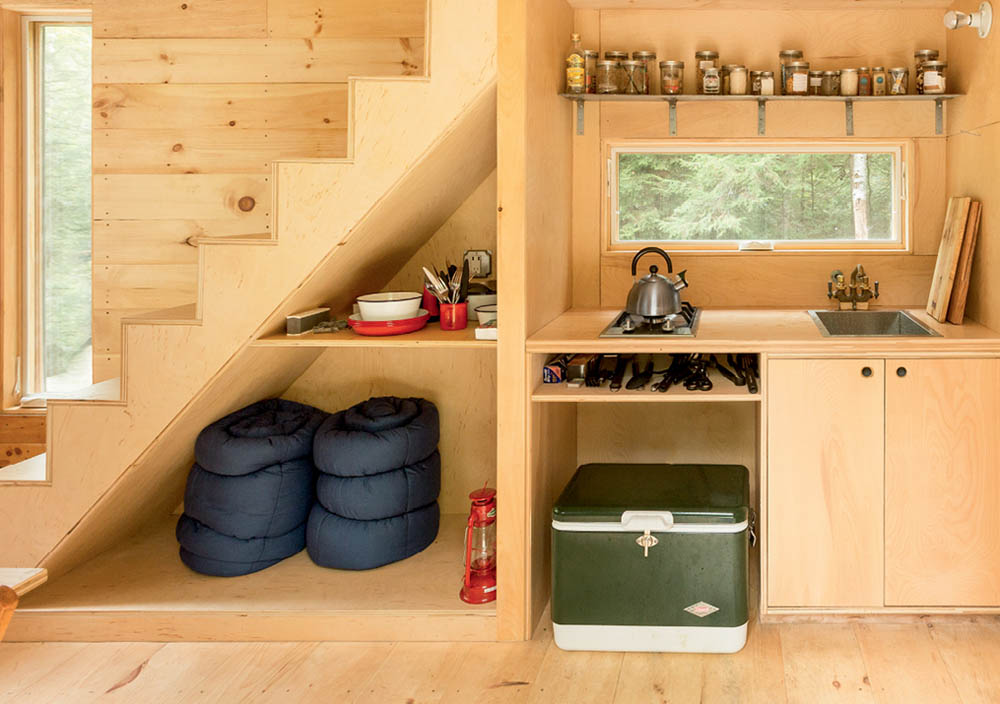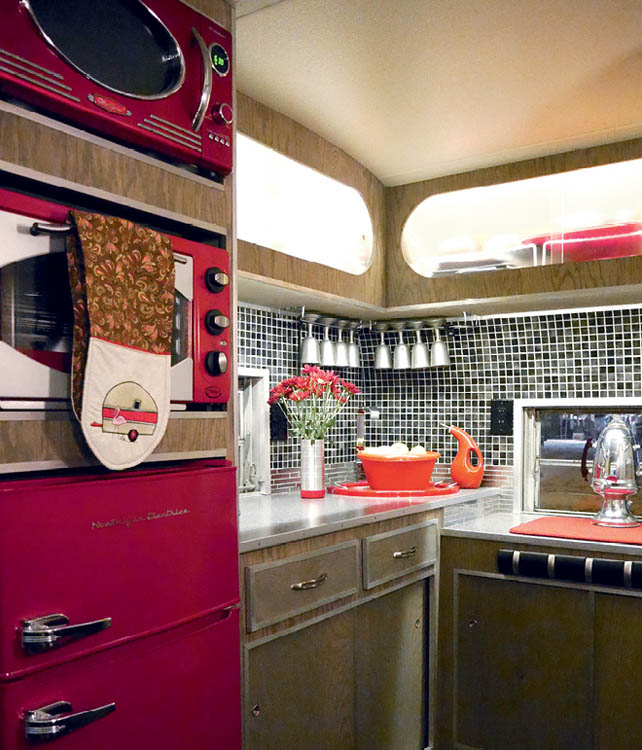Contents
Introduction
So I suppose its an addiction gone right an obsession, at least, thats not too detrimental to my health. Then again, its all in how you look at it. Right now, as I type this, Im aboard a flight returning from Reykjavik, Iceland, with an Iron Maiden shirt stuffed behind my back to stifle my chronic building-related back pain. But I cant complain: I was just in Iceland, looking for hidden urban tree houses while digging for daring and funky design ideas.
The obsession Im talking about is tiny houses designing them and building them. While my last book, Microshelters, included all manner of small structures, this time around were focusing mainly (with a couple of exceptions) on the true tinies, as some call them. Not so much forts, tree houses, day-use hobby huts, or bizarre shelters, but bona fide tiny houses. Nonetheless, youll find an eclectic mix here, and perhaps some will be right up your alley.
Im not here to judge, although (open mouth, insert foot) youll see that I have tacked on a Deeks Takeaways section for each featured structure. Here Ill offer some words of praise, and possibly some constructive criticism, for the home at hand. As Ive told my workshop students, there is much to learn from each and every design, from the good, the bad, and even the incredibly ugly. In addition, Ive asked the builder of each tiny home to honestly divulge what, in retrospect, theyd do differently. Some might come off as more honest than others, but many a brave soul has dropped you little tidbits of insight about things that really didnt work out in the long run.
Whether youre leafing through this collection in a bookstore, or settling in for a long read by the light of a fire with a good snifter of who-knows-what, or casually flipping through it on your ... er ... throne, I hope you will find ideas and inspiration on these pages. Perhaps youll pick up a random time- and money-saving method, or maybe youre new to this stuff and will see something that totally changes your world. Heck, this could be your first crack at tiny houses, so I hope you pull something positive from it, whether you intend to try out this lifestyle or just find the notion absolutely absurd yet worth a curious peek.
But wait, theres more! If you do feel inclined to take a crack at a bare-bones tiny structure (one that you could customize and outfit to serve your own needs), flip to the back of the book, where youll find construction drawings for just such a structure.
Finally, Id like to state my opinion that tiny living is not for everyone, and I never push the idea. In fact, you can read about how he came to the same conclusion. You might ask, Deek, why are you sabotaging the magic and romance of the scene? Im not; Im just being honest. After all, the point here is more about striving toward simplicity than going small. My hope is that the idea of scaling back, even just a bit, might turn out to be something you actually want to do, whether you end up with a real tiny house or not.
But What Makes a Tiny House Tiny?
Go into any tiny house Facebook group or any discussion forum, or even just talk to anyone about tiny houses, and I guarantee this will be one of the first questions youre asked (besides where you go to the bathroom) and rightfully so. See, we as people just love to classify and categorize. This isnt all bad, as it does help to clear things up. So let me quickly summarize what I mean when I talk about tiny houses. Its pretty darn simple.
For the sake of this collection, my personal standards (with a handful of exceptions) are as follows:
- The dwelling has to be for full-time use, or at least have the potential for it. A few structures in this book are borderline, depending on the climate, or because they lack some amenities, but whos counting? They were too cool and original to leave out. Other featured builds might be rentals or seasonal cabins but have the potential to become full-time homes. Dont cover your eyes and plug your ears because one particular cabin might not have insulation or perhaps a shower worthy of the Ritz Carlton. Look beyond to what else it might offer for inspiration.
- Ill just come out and say it: poop. There has to be a way for it to go somewhere. Granted, much of the world still uses outhouses, but well stick mainly to indoor bathrooms that are part of the homes design. That said, there are some exceptions in which the solution sits in a separate unit from the home or cabin, or where a bathroom could simply be added to the existing space. In addition, a space to bathe is another facet most people require in a bathroom, and most of these structures have it.
- Its gotta be small. The maximum square footage of a tiny house is often (and sometimes annoyingly) debated, but for the most part were going with 400 square feet and under. I dont feel that this is the end-all definition, but 400 square feet is indeed tiny.
- Usable, comfortable sleeping space is a must. I would have loved to include more of the mind-blowing sheds, backyard studios, forts, tree houses, and writing retreats that Ive toured, seen, built, or photographed, but we already hit upon those in Microshelters, so the new ones Ive discovered since will have to wait until another time.
- It should have some kind of kitchen. Sure, many homes around the world (especially in hotter climates) have kitchens in structures that are separate from the home, but for this book I was looking for homes with kitchens that were part and parcel of the design. I stretched this one a hair for a few structures that offered so much to enjoy, inspire, or learn from that I couldnt leave them out.
- And it needs means for heating/cooling


